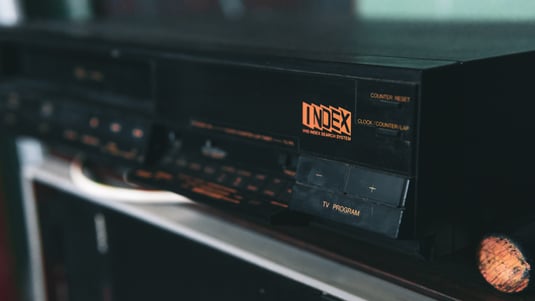Should you stop using AS2? Is AS4 better than AS2? What is the difference between AS2 and AS4 and should we be looking to change to one or the other? Is AS2 still compliant? Just some of the questions that our clients have asked us over the last couple of months.
So, what is the difference between AS2 and AS4, and which is better? Our clients have found that much of the material available in the public domain is confusing or downright contradictory. As the UK’s leading file transfer experts, we felt compelled to offer our view. So here we go...

AS2 and AS4 both serve as prominent file transfer protocols that enable secure data exchange among businesses and their partners. And, we’re about to delve into the differences between the two and explore the question of whether one holds advantage over the other.
What is AS2 and How Does it Work?
AS2 is a second-generation EDI protocol created in 2002 to replace AS1 which used email protocols for secure transfers. The AS2 protocol secures files with encryption and uses digital signatures to guarantee the authenticity. Moreover, signed receipts issued by the AS2 receiver enable legally valid non-repudiation.
Unlike FTP, SFTP (Secure File Transfer Protocol) or FTPS, AS2 operates over the web protocols HTTP and HTTPS, and combines several other trusted technologies, including SSL Certificates, S/MIME, and file hashing to achieve this.
As a result of its robust message encryption, AS2 has become a well-known standard, and is used extensively for the exchange of EDI files such as X12 or EDIFACT. However, supporting EDI-driven processing, although the most widespread application of the AS2 protocol, is not its only potential utilisation. In fact, AS2 also supports many other file type transfers including XMl, JSON, CSV, Flat files, text files, images or other binary or text files.
In a challenge to the dominance of traditional EDI, EDI processes are changing, and increasingly they now co-exist with other modern technologies such as APIs.
The acknowledgement of a gradual change in technologies across industry brings us nicely onto AS4.
What is AS4 and How Does it Work?
AS4 can be seen as the continued development of AS2, and in this respect could be seen as superseding AS2. Whilst AS2 remains one of the most widely adopted messaging standards, AS4 is a next generation protocol that encapsulates burgeoning modern technologies, building on the principles of AS2 to improve security, reliability, and flexibility for delivering and receiving messages.
Compared to AS2, AS4 provides more agility and reliability for the modern B2B ecosystem thanks to SOAP-driven exchanges, XML, metadata, and WS-Security and simplifies and standardises the use of web services for B2B data exchange and integration. Unlike AS2, AS4 is not only a protocol for data exchanges as it also provides rich support for metadata and support for multiple file transfers. AS4 allows the extension of these newer technologies for external integration facilitating a natural and seamless operation.
However, an issue for AS4 is that although SOAP messages with WS-Security allow for both XML signatures and encryption, this method is not yet widely adopted, or accepted across businesses in the same way that AS2 methods have been adopted and accepted over the years as a secure messaging standard.
AS4 is sometimes compared (functionally) to EDIINT (or EDI via Internet) whereas AS2 is more aligned with older EDI methods and legacy EDI systems.
By using SOAP messages rather than S/MIME, AS4 is well placed to act as a bridge in the transition of Businesses from traditional EDI to more modern API-driven processes. This speed of this transition will significantly increase in the future as these new technologies integrate across industry.
What is better? AS2 or AS4?
This is a surprisingly open-ended question, and the answer is “it depends.” The analogy we keep on returning to is one we’re sure you’re familiar with. Betamax vs VHS.
If you’re old enough to remember the video wars you’ll remember that Betamax, though technically superior, lost out to the mass adoption of VHS. The AS2 vs AS4 debate is similar. AS2 is more widespread. AS4 is its next evolution. If your industry is dominated by VHS, moving to Betamax is going to be a hassle. Plus, you cannot borrow any of your friends' favourite films.
Ultimately, as modern technology continues to embrace microservices or API’s, there is a genuine question as to the validity and relevance for the continued use of secure messaging transfers in business and industry, regardless of messaging protocol.
If you are in an industry that needs to communicate with legacy EDI processes, then AS2 would probably be the necessary protocol to use. If, however, your business and your partners have newer technologies on both sides of the secure data exchange piece, AS4 could be the better protocol to use for the future.
The fact remains that AS4 has not yet gained wide adoption, due to the popularity and the continued use of AS2. This is despite AS4 being more compatible with modern standard environments because many organisations use technologies like SOAP, XML, and EDI for their internal integrations.
There is some recent evidence online of a growing appetite to deprecate AS2 in favour of AS4 but due to AS2’s simplicity and widespread adoption across world industries, it remains the most widely used and preferred mechanism today for the B2B exchange of EDI and other data.
AS2 will continue to hold this top position whilst legacy EDI systems with AS2 messaging requirements (or limitations) are in common operation across industry.
But watch this space... DVDs won the war on VHS.

Want to know which MFT tools offer AS2 or AS4? Check out our MFT Software Tools list or book a call with one of our experts.
|
About the Author:
|

